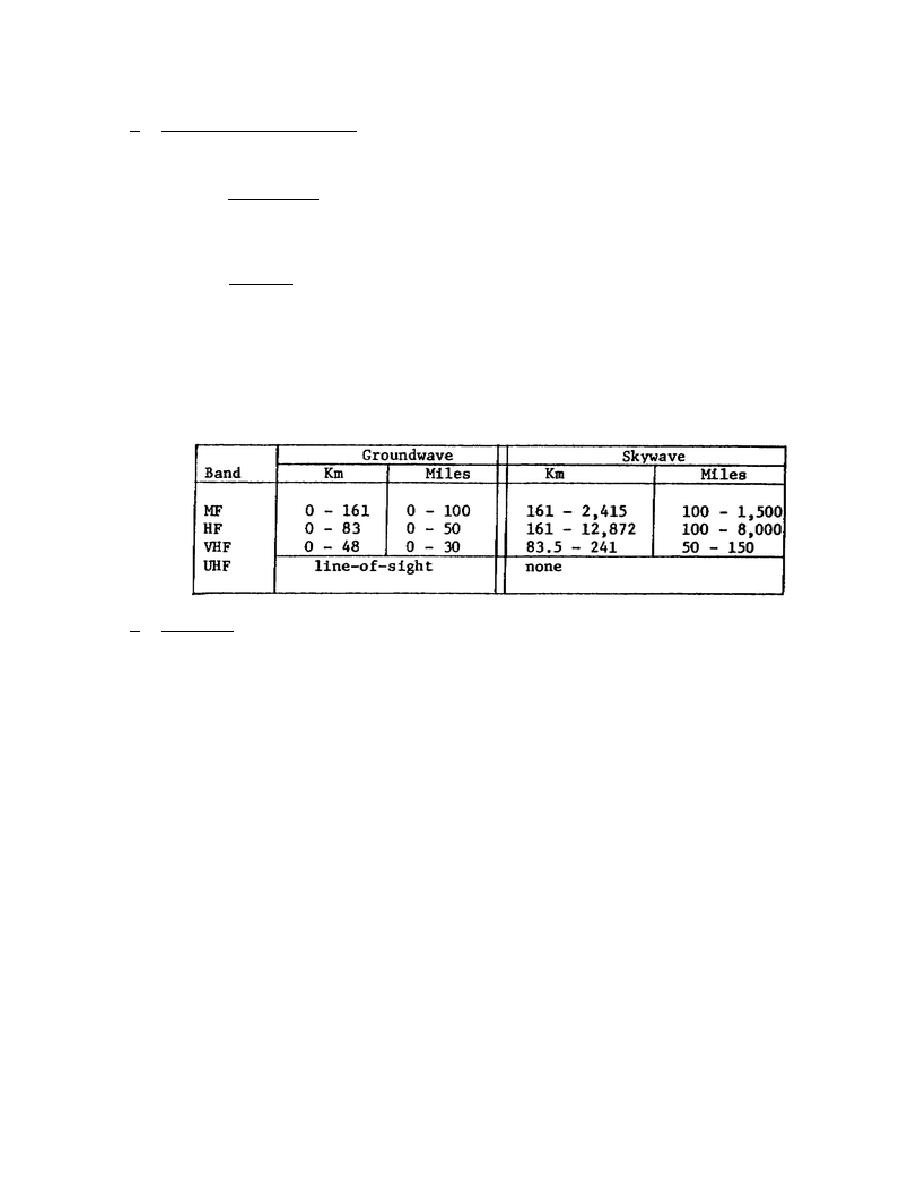
2-2.
PRINCIPLES OF RADIATION
a. Radio Wave Components.
Energy is radiated by a transmitting antenna in
the form of an electromagnetic wave which consists essentially of two parts,
groundwave and skywave.
(1) The groundwave travels close to the surface of the earth and has a
relatively short range.
The distance range of the groundwave is
affected by the transmitting frequency; the higher the frequency, the
shorter the range.
(2) The skywave travels upward from the antenna at all angles, and is
usually bent back to the earth's surface by the ionosphere, an
electrically charged (ionized) region of the atmosphere.
Because of
the bending effect of the ionosphere, the skywave returns to the earth
at some distance from the transmitting antenna.
In this way, the
skywave makes long-distance communication possible.
(3) The approximate ranges of groundwaves and skywaves at tactical radio
frequencies are shown in the following chart.
b. Antennas.
During transmission, an RF current in the conductor
(transmitting antenna) produces an electromagnetic field which is radiated. During
receiving
periods,
when
a
conductor
(receiving
is
cut
by
an
electromagnetic field, a current will flow in the conductor. If the wavelength of
the conductor is equal to half the wavelength of the electromagnetic wave, the
result is a half-wave antenna.
(1) The half-wave is the physical length of the basic antenna element. The
dipole shown in figure 2-4 is a typical half-wave antenna.
Ideally,
the radiation is at right angles to the plane of the antenna, and
completely encircles the conductor.
The resulting radiation pattern,
therefore, can be compared with a doughnut, with the radiator passing
through its center, as shown in figure 2-4.
(2) The quarter-wave vertical antenna is a variation of the basic half-wave
antenna. The mast represents a quarter wavelength of the radio signal,
and the other quarter wavelength is supplied by a ground image to make
up the required half-wave antenna.
The ground image may be an
artificial ground (called a counterpoise), the earth itself, or the
metal body of a vehicle on which the antenna is mounted.
309 L2
20



 Previous Page
Previous Page
